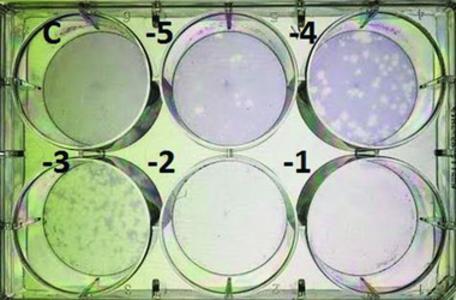寨卡病毒:量化、传播、检测和储存
引用次数: 30
摘要
寨卡病毒(ZIKV)属于黄病毒科,黄病毒属,是一种节肢动物传播的病毒,于1947年首次在乌干达的寨卡森林中发现。最近在南美洲爆发的疫情已将寨卡病毒与人类小头症和格林-巴罗综合征病例联系起来。随着人们对寨卡病毒的兴趣增加,必须制定方案以促进适当的研究。在这里,我们描述了量化,繁殖和储存ZIVK所需的实验室技术。我们还审查了处理寨卡病毒的适当安全方案,寨卡病毒被美国疾病控制和预防中心列为生物安全2级病原体。©2016 by John Wiley &儿子,Inc。本文章由计算机程序翻译,如有差异,请以英文原文为准。

Zika Virus: Quantification, Propagation, Detection, and Storage
Zika virus (ZIKV), belonging to the family Flaviviridae, genus Flavivirus, is an arthropod-borne virus that was first discovered from the Zika forest in Uganda in 1947. Recent outbreaks in South America have linked ZIKV to cases of microcephaly and Guillain-Barré syndrome in humans. With the increased interest in ZIKV, protocols must be established to facilitate proper research. Here we describe the laboratory techniques required to quantify, propagate, and store ZIVK. We also review the proper safety protocol for the handling of ZIKV, which is classified as a Biosafety Level 2 pathogen by the United States Centers for Disease Control and Prevention. © 2016 by John Wiley & Sons, Inc.
求助全文
通过发布文献求助,成功后即可免费获取论文全文。
去求助
来源期刊

Current Protocols in Microbiology
Immunology and Microbiology-Parasitology
自引率
0.00%
发文量
0
期刊介绍:
Current Protocols in Microbiology provides detailed, step-by-step instructions for analyzing bacteria, animal and plant viruses, fungi, protozoans and other microbes. It offers updated coverage of emerging technologies and concepts, such as biofilms, quorum sensing and quantitative PCR, as well as proteomic and genomic methods. It is the first comprehensive source of high-quality microbiology protocols that reflects and incorporates the new mandates and capabilities of this robust and rapidly evolving discipline.
 求助内容:
求助内容: 应助结果提醒方式:
应助结果提醒方式:


